So, you are on the road in your RV, traveling to your favorite camping site. You have the luggage, the survival tools, and a stack of food and drinks in your RV refrigerator.
Suddenly, your RV refrigerator stops working. That would be nothing short of a nightmare, for all the food will go bad.
To your surprise, the RV refrigerator is not cooling, but the freezer is. Sounds strange, right?
If this has happened with you, you are not alone, because this issue is not uncommon with RV owners.
If you aren’t new to the RV refrigerator mechanism, you can understand that the coolant first goes to the freezer before making it to the fridge.
Furthermore, the bouncier the road is, the higher is the likelihood of you having issues with your refrigerator’s cooling capacity.
If you don’t want the coolant clogged up, make sure you drive as smooth as possible. Not only will it cause a major inconvenience on your part, but the repairs will be expensive as well.
If you are stuck in such a situation, do not panic. To make your life easy, we have put together details about some common RV refrigerator malfunctions, and ways to troubleshoot them.
RV Refrigerator Freezing In The Freezer But Not cooling In The Refrigerator compartment
As a responsible RV owner, it is vital to keep you RV refrigerator at the unit level. For this purpose, a carpenter’s level can surely come in handy.
To determine whether or not your RV refrigerator is in excellent working condition, you can use a thermometer.
However, you can also do the same by touching the coils inside the RV refrigerator, as well as the freezer.
Also, take a look behind the refrigerator to make sure whether the flame is burning or not. But checking the flame is only useful, if there is a gas mode.
If your RV refrigerator runs on electricity, make sure to check the heating element for sufficient heating. Try not to touch the heating element, for it can cause severe burns.
If you have prior experience with recreational vehicles, you will know that an RV freezer starts cooling before the refrigerator. The refrigerant first goes to the freezer, before making it to the refrigerator.
So, if the RV refrigerator isn’t cooling but the freezer is, this is a sign that there are airflow problems. In some cases, cool air is moved to the fridge from the freezer, through a diffuser. There are times when the diffuser gets clogged with ice. You can identify this with by paying close attention to the sounds of the evaporator fan.
In case, you don’t hear the sound of the evaporator fan, do not worry. The evaporator fans tend to cycle on and off, so try again after a few minutes.
How Cold Should An RV Refrigerator Be?
In the perfect scenario, the RV freezer should be at zero degrees, while the RV refrigerator should be somewhere around 34 degrees.
Just like any other refrigerator, the main compartment of an RV refrigerator should not be more than 42 degrees.
To measure the temperature, make sure to use a refrigerator thermometer. Despite being able to withstand bumpy roads, most RV refrigerators face almost the same issues as a conventional household refrigerator.
Driving on steeper roads is one of the primary reasons behind an RV refrigerator failure. Try to drive your RV only on straight roads.
However, if you do hit a steep or uneven road, make sure to turn the RV refrigerator off. To make sure your RV refrigerator is level, try using a carpenter’s level.
If your RV refrigerator isn’t working but the freezer is, the following tips will help you through.
RV Refrigerator Tips For Troubleshooting
Despite their sturdiness and the ability to withstand rough handling, RV refrigerators are prone to errors and faultiness.
One of the most common problems with an RV refrigerator is that sometimes it fails to cool, while the freezer is working correctly.
Often, some of the most common reasons behind a faulty RV refrigerator are the heating elements, control boards, and thermostats.
However, it is better to allow your RV refrigerator the time it needs to start cooling.
Let’s take a look at some of the reasons behind freezer getting cold but not the fridge.
1. Lack Of Air Circulation
Insufficient air circulation is not uncommon in areas with torrid temperatures. In case the rate at which ammonia and hydrogen burn is slower than the pace at which surrounding air heats up, the refrigerator won’t be able to provide the cooling it otherwise should.
Installing a fan is the best thing you can do. Place the fan with a higher PRM behind the opening space of the RV refrigerator.
This will enhance the flow of air in the refrigerator’s chamber, thus creating a balance between the temperature of the RV refrigerator and the temperature in its surroundings.
As a result, the refrigeration chamber will cool efficiently.
2. Thermistor Problems
An essential component of the RV refrigerator is the thermistor. The thermistor possesses the negative temperature coefficient; the cooling cycle of your RV refrigerator depends on.
With a rise in surrounding temperatures, the cooling ability of these thermistors gets compromised.
As a result, there is a faster flow of the heated mixture, which results in excessive cooling inside the freezer and a drop in cooling of the refrigerator.
The easiest way to deal with the issue is to have the thermistor unplugged and replace it with a new one.
This will allow the refrigerator to run efficiently, without the slightest hindrance in temperature regulation.
Be very careful about using a fridge without a thermistor for an extended period can be detrimental for the refrigerator. The thermistor should only be removed in case of an emergency.
3. Temperature Sensors
Another reason for RV refrigerator problems is the temperature sensor. If loosely attached, they can move, slip, and even fall off its position.
Make sure the sensor is correctly connected to the fin. Once the sensor has been perfectly attached, you can adjust the temperature of the refrigerator by moving the sensor to and fro.
4. Blocked Refrigerator Exhaust
There is a fair chance that the hot air built inside the RV refrigerator fails to find its way out. This usually happens when the exhaust of your RV refrigerator is clogged.
The ventilator of the RV refrigerator is situated on the backside. It finds its way out through the vent cover, which is placed on the roof of your recreational vehicle.
Sometimes due to dust or similar pollutants, the vent gets chocked, thus keeping the hot air from escaping.
When that happens, the refrigerator temperature loses equilibrium with the temperature in the freezer.
To solve the issue, start by removing the vent cover situated on the roof of the RV. After removing the vent cover, inspect it for any blockages that are keeping the hot air from escaping.
As discussed before, dust is the main perpetrator behind a blocked vent cover and a significant contributor to the inadequate cooling of the RV refrigerator.
5. Refrigerator Coolant
Just like your everyday household refrigerator, an RV refrigerator also requires coolant. The coolant used in an RV refrigerant is the same ammonia mixture, and not something else.
The coolant goes to the freezer before it reaches the refrigerator. This is one of the primary reasons why a refrigerator is affected first instead of the freezer, in case of a discrepancy.
In most cases, the problem arises when the ammonia mixture dries down, and the fridge continues to run with an empty tank.
When that happens, the first thing you can do is have the tank refilled. While the tank is empty, make sure not to use the RV refrigerator and keep it turned off.
Furthermore, before you fill the tank up, make sure to have the fridge defrosted. In the process, if the refrigerator remains frozen, it will lead to nasty odors in the chamber.
6. Road Bumps
It is a no-brainer that ammonia is far less dense than water. This is why; it flows at a much slower pace than water would.
Therefore, its supply to the chamber must be swift and hindrance-free. However, it is impossible to avoid the bumpiness of the road as you travel.
Because of the bumpiness on the way, the supply of the burned mixture goes out of proportion. As a result, the refrigeration is not up to par.
Gravity is the answer to this problem. One of the significant hurdles to the flow of ammonia mixture is the angle at which the cooling unit and the supply vent are placed.
You can either keep the structure straight or not incline it for more than 6 degrees. These are two options you have to make sure that the refrigerator and the freezer stay in equilibrium.
Some Quick Tips
Conclusion
There is a chance that there is nothing wrong with your RV refrigerator. Often, the lights, fans, and other electrical appliances in your RV are left turned on, thus leading to a rise in the electrical load.
When the pressure gets too intense, it hinders the flow of electricity to the refrigerator, which results in a lack of cooling.
Because the freezer is the first one to receive its share of electrical power, the energy available for the refrigerator gets even scarcer.
Consequently, the freezer remains cooler than the refrigeration chamber. It’s not as if the refrigeration chamber won’t cool down, but the process will be far longer than that of the freezer.
Besides the electrical current, the voltage also has a significant impact on the performance of your refrigerator.
A reduction in the voltage will affect not only the refrigerator but also the remaining appliances installed within the RV. To enjoy the fun road trip in your RV, make sure the voltage in your RV does not go below 110 volts.
Have a Safe Trip!


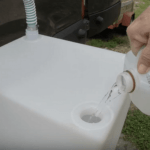
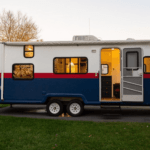
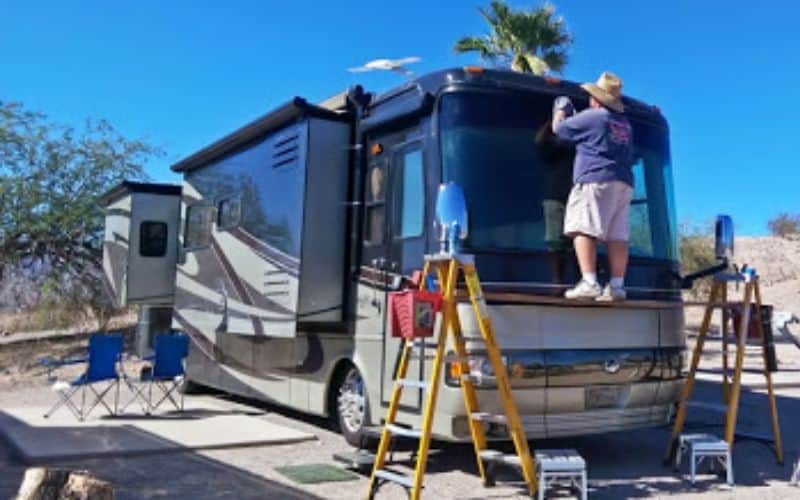
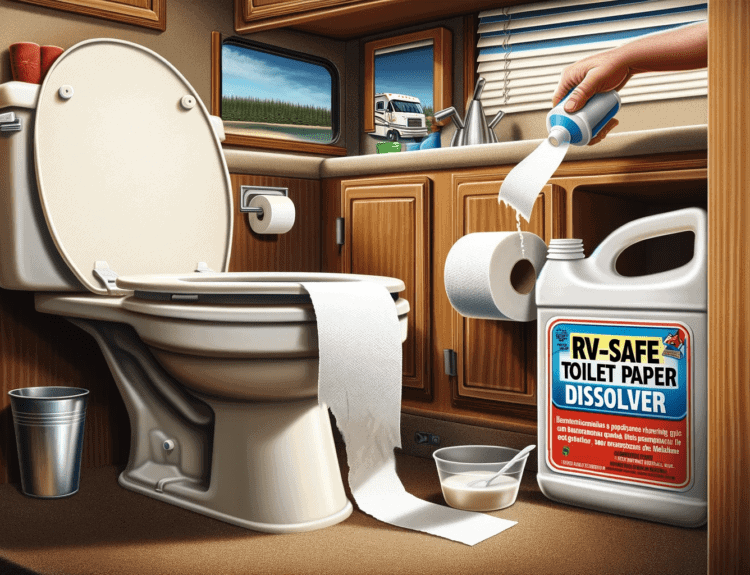
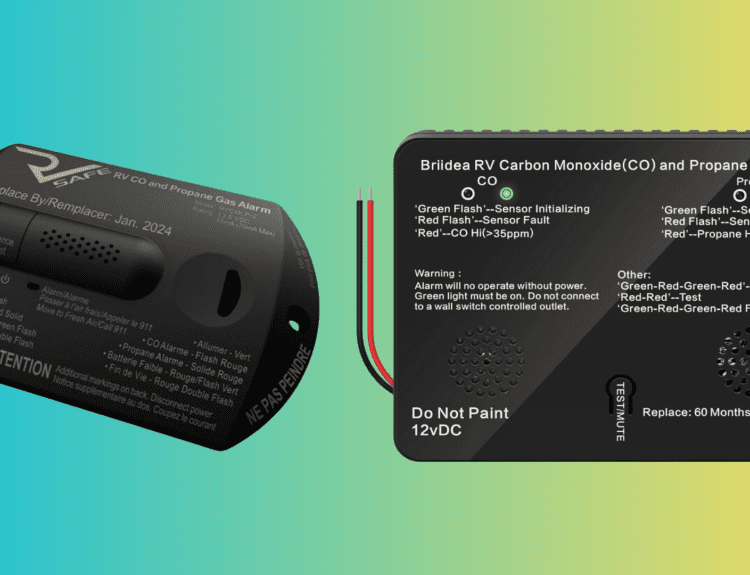
6 Comments
patrick jay mcpherson
3 years agoHi, I replaced the thermister and the problem still exists. lower compartment still not cooling. What is the next step? Do I need to burp the refrigerater?
Aaron Richardson
3 years agoClogged coils can cause poor cooling. Check to make sure nothing is stuck in the condenser fan and that it spins freely (models with coils on the back won’t have a fan). To do this, unplug the fridge and pull it out. Clean the fan blades and spin the fan by hand to see if it’s stuck.
Melody Sanna
3 years agothis article was helpful to trouble shoot the refrigerator not cooling below 55 yet the freezer compartment worked fine,
Thanks, looking forward to seeing your articles.
John & Melody
Vicki Roach
2 years agoI have this issue but only with propane. Fridge works fine on AC. When on propane, only freezer works. Help??
Bruce Goodrich
2 years agoOn AC the freezer and fridge work well. On gas, freezer works fine but the fridge can go above 50 deg in temperatures 80 deg or higher. Any ideas?
Callista Stockhoff
1 year agoWe have a pretty old Norcold fridge in our camper. I have noticed it is colder at the top of the fridge than at the bottom but haven’t actually used a thermometer to check the temp yet. That is my next step. The eyebrow board on our fridge does not work and we were unable to find a replacement but when it was shut off it was set to a 3 and does get cold. Just not sure it’s cold enough. I have heard that we can move the thermistor/thermostat, I’ve seen it called both, off of the fin it’s currently on to a fin further to the left to make it colder. Is this correct? Also the this piece looks to be rusted and may prove difficult to move, any suggestions?